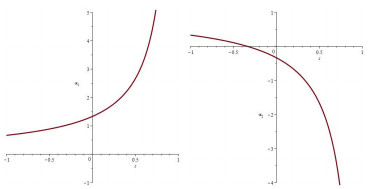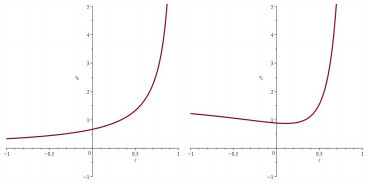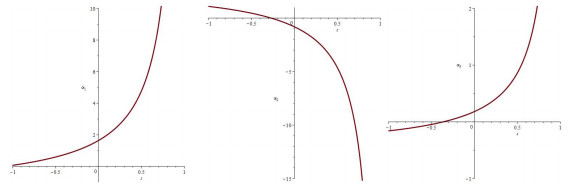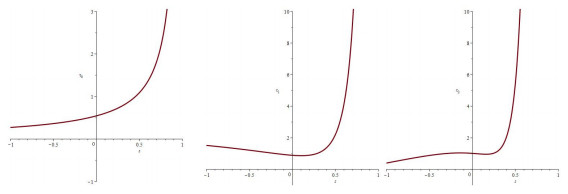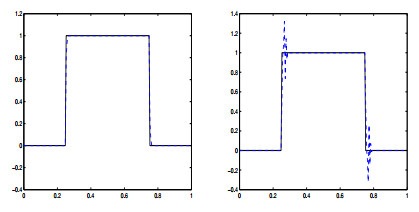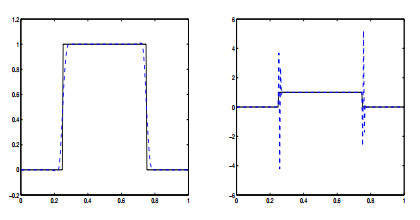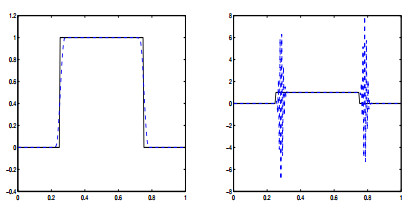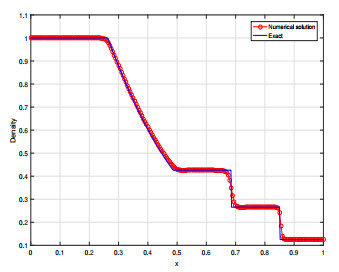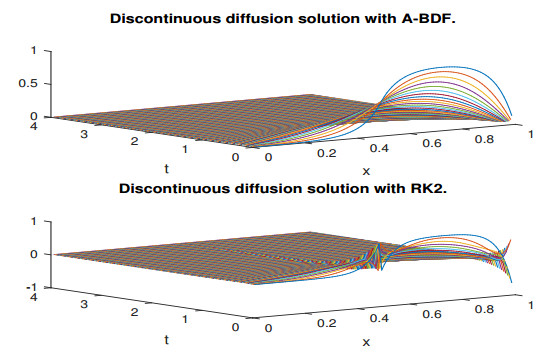1.
Introduction
From an ecological and financial perspective, toxicants have emerged as a major threat to terrestrial and aquatic environments. With increasing demand, industries are cranking out a flood of toxic chemicals. Toxic chemicals and substances, such as cadmium, arsenic, copper, lead, etc., are often dumped into lakes, rivers and oceans, where they can have a devastating effect on aquatic life [1]. Toxic oil, metals and synthetic organic chemicals are common contaminants of river, lake, and sea water [2]. A significant loss of biodiversity occurs in ecosystems where toxic contaminants are present [3]. Fish, birds and mammals that eat contaminated marine life can be exposed to the toxins themselves. Therefore, many species have become extinct, and many more are on the verge of extinction, due to the unchecked release of toxic substances into the environment. There are numerous species in the ocean that produce toxins, and these toxins, if released into the environment, can have serious consequences for the development of other organisms. For example, the grazing pressure of zooplankton can be greatly reduced by phytoplankton that are naturally toxic. Therefore, research into the effects of toxic substances on ecological communities is becoming increasingly significant from both an environmental and a conservationist point of view.
The mathematical modeling of the impact of toxicants on a population was a newly established area in the early 1980s [4,5,6]. In order to effectively estimate the qualitative impact of toxic substances on species, mathematical models are a great tool to use. Das et al. [7] investigated a predator-prey fishery model with harvesting and the effects of toxicants which are released by some other species. Chakraborty and Das [8] studied a two-zooplankton one-phytoplankton system in the presence of toxicity. Ang and Safuan [9] discussed an intraguild fishery model in which predators are thought to become infected through their prey, while fish are thought to be infected directly by an anthropogenic toxicant in the environment. Juneja and Agnihotri [10] addressed the issue of two competing fish species, each of which releases a harmful chemical for the other.
It is noted that in biological populations, delay plays an important role. In the last few years, theoretical and mathematical ecologists have paid a lot of attention to research on differential equations with time delays [11,12,13,14,15]. Even so, studying the effects of time delay on the dynamics of a system can be very complicated. For example, it can cause the system to lose its stability and lead to periodic solutions and chaotic behavior. Pal and Mahapatra [16] studied the combined effect of a toxicant and delay on the dynamical behaviors of a delayed two-species competitive system with imprecise biological parameters. Pal et al. [17] took into account two fish species that are in competition with one another, each of which releases a toxin that is poisonous to the other and each of which obeys the law of logistic growth. Meanwhile, in reality, species are spatially heterogeneous, so individuals seek out low population densities where they have a better chance of survival. As a result, the reaction-diffusion predator-prey model with toxic effects has been considered by some researchers. Zhang and Zhao [18] investigated a diffusive predator-prey model with toxins, and their research results show that toxic substances have a great impact on the dynamics of the model. Zhu et al. [19] investigated a delayed diffusive predator-prey model affected by a toxic substance. However, we find that the research results about the delayed diffusive predator-prey model with toxic substances are rare.
Motivated by these pioneer works, we hypothesize that prey produce toxins for predators, and that this process is not instantaneous but rather follows a discrete time lag that can be thought of as the species' maturation period. Toxic substances released by prey into the environment have a half-life of τ, which we introduce here. We consider a diffusive predator-prey model as follows
where u(x,t), v(x,t) denote the density of the prey and the predator, respectively. r is the birth rate of prey. ua+u2 is the Holling type-Ⅳ function. α is the maximum predator per capita consumption rate of u due to v. β is the conversion of the biomass constant. The parameter d is the death rate of predator. γv2 is the functional response of the u population to the density of the v population.
To explore the dynamics of system (1.1), we first do the non-dimensionalization described below
Thus, system (1.1) is simplified (by removing the bars) to be
In this study, we will study the dynamics of system (1.2), such as the existence of the solutions, local/global stability of the equilibria, and Hopf bifurcation induced by delay. In addition, we will also discuss the existence and non-existence of non-constant positive solutions of the following elliptic system
The structure of this paper is as follows. In Section 2, the existence of solutions and the persistence of system (1.2) are studied. In Section 3, the stability of the equilibria, Turing bifurcation, and Hopf bifurcation induced by delay are discussed. In Section 4, the global stability of the equilibria are investigated by using the Lyapunov functional method. In Section 5, the non-existence and existence of the non-constant steady state are studied. In Section 6, theoretical results are verified through numerical simulations. Finally, a brief conclusion is given in Section 7.
2.
Basic dynamics
Theorem 2.1. Assume that u0(x,t)≥0, v0(x,t)≥0, and u0(x,t)≢0, v0(x,t)≢0. There is a unique solution (u(x,t),v(x,t))>(0,0), (t>0,x∈ˉΩ) of system (1.2), and
Additionally,
where ‖u(x,t)‖C(¯Ω)=maxx∈¯Ω,t∈[−τ,0]u(x,t), ‖v(x,t)‖C(¯Ω)=maxx∈¯Ωv(x,t), K1=max{1,maxˉΩ,t∈[−τ,0]u0(x,t)} and K2 depends upon β, a, d, γ, u0(x,t), v0(x,t) and Ω.
Proof. We consider the following auxiliary system
Obviously, (u_(x,t),v_(x,t))=(0,0) and (ˉu(x,t),ˉv(x,t))=(˜u(t),˜v(t)) are the lower and upper solutions of system (2.3), respectively, where (˜u(t),˜v(t)) is the unique solution of
where ˉu0=max¯Ωu0(x), ˉv0=max¯Ωv0(x). As a result, according to Theorem 8.3.3 in [20], we obtain that system (1.2) has a unique globally defined solution which satisfies 0≤u(x,t)≤˜u(t),0≤v(x,t)≤˜v(t). By the strong maximum principle, we have that u(x,t),v(x,t)>0 (t>0,x∈ˉΩ).
Evidently, from the first equation of system (2.4) we have that limt→+∞u(t)≤1, which implies limsupmaxt→+∞x∈ˉΩu(x,t)≤1. Therefore, ||u(⋅,t)||C(ˉΩ)≤K1 for all t≥0.
For v(x,t), we let U(t)=∫Ωu(x,t)dx and V(t)=∫Ωv(x,t)dx; then,
Multiplying Eq (2.5) by β, and then addin it to Eq (2.6), we have
||u(⋅,t)||C(ˉΩ)≤K1, so we have that U(t)≤K1|Ω|. Thus,
where M2=(1+dβ)|Ω|. Integrating the inequality (2.7), we obtain
This means that ||v(⋅,t)||L1(Ω)≤β||u0(⋅)||L1(Ω)+||v0(⋅)||L1(Ω)+M2d. According to Theorem 3.1 [21], there is an M3 such that ||v(⋅,t)||L∞(Ω)≤M3. Therefore, there exists a K2 such that ||v(⋅,t)||C(¯Ω)≤K2. □
Theorem 2.2. If 1−K2a>0 and β(1−K2a)γK2(a+K1)−dγK2>0, then system (1.2) has the persistence property.
Proof. From system (1.2), we obtain
For small enough ε>0, it holds that 1−K2a−ε>0. Therefore, there is a t1 such that
The second equation of system (1.2) is then solved using the upper and lower bounds of u, yielding
for t>t1+τ. Then there exists t2>t1+τ such that for any t>t2,
From (2.10) and (2.12), we can easily obtain that
They are evidence that the system (1.2) is persistent. Regardless of the diffusion coefficients, this indicates that, from a biological point of view, a predator and its prey will always coexist within the habitable domain at any given time and in any given location. □
3.
Local stability and bifurcation analysis
Obviously, model (1.2) has a trivial equilibrium E0=(0,0) and a predator-free equilibrium E1=(1,0), and the interior equilibrium must simultaneously meet the two non-trivial prey and predator nullcline conditions below:
From (3.2), we obtain that v=−(u2+a)(u−1), and substituting this into (3.1), we have
Obviously, Eq (3.3) has at least a positive root. Therefore, system (1.2) has at least an interior equilibrium E∗=(u∗,v∗). To illustrate this, isoclines (3.1) and (3.2) are shown in Figure 1. Figure 1(a) shows that isoclines (3.1) and (3.2) intersect uniquely in the interior of the positive quadrant, i.e., system (1.2) has a unique interior equilibrium, and Figure 1(b) shows that isoclines (3.1) and (3.2) intersect two times in the interior of the positive quadrant, i.e., the system has two equilibria.
In order to study the stability of the equilibria. First, we define the real-valued Sobolev space
Then (X,<⋅,⋅>) is a Hilbert space. In C([−τ,0],X), system (1.2) can be thought of as a functional differential equation in abstract form.
Let U(t)=(u(⋅,t),v(⋅,t))T. Thus, we linearize system (1.2) around a constant solution E=(u,v); we get
where D=diag(d1,d2),
and Ut=col(u(x,t),v(x,t))∈Cτ and L:C([−τ,0]→X is given by
with φ=(φ1,φ2)T∈C([−τ,0] and
Therefore, the characteristic equation of system (3.4) is
We know that with the corresponding eigenfunctions ψn(x) the problem
has eigenvalues 0=μ0<μ1≤μ2≤⋯≤μn≤μn+1≤⋯. Substituting
into Eq (3.4), we have
Hence, Eq (3.6) equals
where
For the extinct equilibrium E0=(0,0), J(0,0)=(100−d). When n=0, the eigenvalue λ=1>0, therefore, E0 is a saddle point, which is always unstable.
For the predator free equilibrium E1=(1,0), J(1,0)=(−1−1a+10βa+1−d). Therefore, if βa+1−d<0, then E1 is stable.
In what follows, we first discuss the stability of the interior equilibrium of system (1.2) with τ=0. When τ=0, the characteristic equation (3.7) becomes
Theorem 3.1. Assume that the conditions
hold; then, the following results are true:
(i) If d1a22−d2a11>0, then the interior equilibrium is locally asymptotically stable.
(ii) If d1a22−d2a11<0 and Δ1<0, then the interior equilibrium is locally asymptotically stable, where
(iii) If d1a22−d2a11<0 and Δ1>0, but there is no n∈N0 such that μn∈(μ−,μ+), then the interior equilibrium is asymptotically stable, where
Proof. Obviously, if a22−a11>0, then An≤A0>0 for n∈N0. a12a21−a11a22−a12b>0 holds, so B0+C=hb3(b2b3−b1)>0.
(ⅰ) If d1a22−d2a11>0, then Bn+C≥B0+C, which implies that all roots of the characteristic equation (3.9) have negative real parts. Therefore, the interior equilibrium is locally asymptotically stable.
(ⅱ) d1a22−d2a11<0 and Δ1<0 hold, which implies that the equation
for any y≥0. That is Bn+C>0 for any μn. Similar to the discussion in (i), we have that the interior equilibrium is locally asymptotically stable.
(ⅲ) There is no n∈N0 such that μn∈(μ−,μ+). So, Bn+C>0 for any μn. Consequently, we have the results.
□
Theorem 3.2. Suppose that the conditions (3.10) and (3.11) hold, and assume further that
hold, then the Turing bifurcation occurs.
Proof. The condition (3.10) is satisfied, so E∗ of the ODE model corresponding to model (1.2) is locally asymptotically stable.
The condition (3.10) holds, so An<0. Therefore, when E∗ of model (1.2) is unstable i.e., Eq (3.9) has at least one positive real root i.e., Bn+C=0 has two true roots, one positive and one negative. Note that
It is easy to see that Bn+C reaches its minimal value at μn=μmin=d2a11−d1a222d1d2 with d1a22−d2a11<0.
It implies that
Hence, Dn is negative when Eq (3.14) is met, and it applies for μ close to μmin. By Eq (3.14), we obtain
which completes the proof. □
Let λ=±iω (ω>0) be a pure imaginary pair of eigenvalues of Eq (3.7). Thus, ω satisfies
Therefore, we have
From the above equation, we obtain
From Eq (3.8), we know that if the condition (3.11) holds, then Bn−C>Bn+C>0. Therefore, B2n−C2>0. We discuss the existence of roots of Eq (3.18) in two cases.
Case Ⅰ. Suppose that
Thus, Eq (3.18) has two positive real roots ω±(n)=√−(A2n−2Bn)±√Δn2. Substituting ω±(n) into Eq (3.17), we have
Case Ⅱ. Suppose that either of the following two conditions are met
So, Eq (3.18) does not have a positive real root.
We summarize the above discussions, and we have the following theorem.
Theorem 3.3. Assume that the conditions (3.10) and (3.11) hold and the following is true:
(i) When
Eq (3.18) has two positive real roots ω±(n); then, Eq (3.7) has a pair of pure imaginary roots ±iω±(n), when τ=τ±j(n).
(ii) If either Δn<0 or Δn≥0,P1n≥0; then, Eq (3.7) has no pure imaginary roots.
Lemma 3.1. Let λ(τ)=ξ(τ)±iη(τ) be the root of Eq (3.7) satisfying α(τ±j(n))=0,ξ(τ±j(n))=ω±(n)). Then the following transversality conditions are satisfied:
Proof. When both sides of Eq (3.7) are differentiated with regard to λ, the result is
Therefore,
Combining with (3.17), we get
□
Denote
For a given n∈Γ, it is seen that τ+j(n) grows with respect to j. As a result, we can deduce that τ+0(n)=minj∈N0τ+j(n) for some fixed n. We define
Theorem 3.4. Assume that the conditions (3.10) and (3.11) hold; we have the following results
(i) If either of the following two conditions are met
then the interior equilibrium E∗ is locally asymptotically stable for τ≥0;
(ii) If A2n−2Bn>0 and Δn>0, then the interior equilibrium E∗ is locally asymptotically stable when τ∈[0,τ∗) and system (1.2) experiences a Hopf bifurcation at E∗. In addition, before it becomes unstable, the interior equilibrium E∗ will go through k changes from stable to unstable and back to stable.
4.
Global stability
Theorem 4.1. Suppose that βK1a<d and E1=(1,0) is globally asymptotically stable.
Proof. Define a Lyapunov functional as follows
Differentiating V(t) with respect to t, we have
βa<d, so dVdt≤0, and dVdt=0 if and only if (u,v)=(1,0). We conclude that E1=(1,0) is globally asymptotically stable. □
Theorem 4.2. Assume that the conditions
hold. Then the unique interior equilibrium E∗=(u∗,v∗) is globally asymptotically stable.
Proof. Define a Lyapunov function as follows
where
Thus, we have
Note that
Therefore, we obtain
From Eq (4.2), we know that dWdt≤0, and dWdt=0 if and only if (u,v)=(u∗,v∗). Therefore, the interior equilibrium E∗ is globally asymptotically stable.
□
5.
Non-constant positive steady states
In this section, we investigate the existence and non-existence of non-constant positive solutions of system (1.3). First, we will give a priori upper and lower bounds for the positive solutions of system (1.3).
5.1. A priori estimates
Lemma 5.1 (Harnack inequality). [22] Assume that c(x)∈C(ˉΩ) and ϕ∈C2(Ω)∩C1(ˉΩ) is a positive solution to
Then there exists a positive constant C∗=C∗(‖c‖∞) such that
Theorem 5.1 (Upper bound). Any positive solution (u,v) of system (1.3) satisfies
Proof. By the strong maximum principle, we know that if there is a x0∈ˉΩ such that v(x0)=0, then v(x)≡0 and u satisfies
From the well known result, u≡0 or u≡1. Hence, if (u,v) is not (0,0) or (1,0), then u(x)>0 and v(x)>0 for x∈ˉΩ.
From the maximum principle, we easily obtained that u(x)≤1 in Ω. Multiplying the first equation of Eq (1.3) by β and adding it to the second equation of Eq (1.3), we have
Then from the maximum principle,
which leads to
□
Theorem 5.2 (Lower bound). There exists a positive constant C_ depending on d1, d2, a, β, d and γ, such that any positive solution (u(x),v(x)) of Eq (1.3) satisfies
Proof.
Let
Then
A positive constant C can be derived from Lemma 5.1 in such a way that
Therefore, it must now show that there is some c>0 such that
On the other hand, suppose that the outcome is incorrect. Then there exists a series of affirmative solutions (un(x),vn(x)) such that
By standard elliptic regularity, we obtain that there exists a subsequence of {(un,vn)}, which is again denoted by {(un,vn)}, such that {(un,vn)}→(u∞,v∞) in C2(ˉΩ) as n→+∞. Noting that u∞≤1, since Eq (5.7) holds, u∞≡0 or v∞≡0. So, we have the following:
(ⅰ) u∞≡0, v∞≢0; or u∞≡0, v∞≡0;
(ⅱ) u∞≢0, v∞≡0.
Moreover, we get the following two integral equations:
(ⅰ) Case: u∞≡0, so we have
and vn>0. But, we integrate the equation of vn; then, we have
This is a contradiction.
(ⅱ) u∞≢0 and v∞≡0, so u∞ satisfies Eq (5.1). So, u∞≡1, and for a large n, we have
Thus, the second equation of Eq (5.9) does not hold, which is a contradiction. So, supˉΩu(x)>0, supˉΩv(x)>0, and consequently Eq (5.3) holds.
□
Theorem 5.3. There is a large constant d∗ for which there is no non-constant positive solution to the problem (1.3) if d1,d2≥d∗.
Proof. Suppose that (u(x),v(x)) is a non-constant positive solution of system (1.3). Denote
Then
Multiplying the first equation in Eq (1.3) by u−ˉu and applying system (1.3), we get
Multiplying the second equation in system (1.3) by v−ˉv and applying Theorem 5.1, we get
From Eqs (5.11) and (5.12), we get
By the Poincarˊe inequality, we have
where
These equations mean that if
then
and (u,v) must be a constant solution.
□
5.2. Existence of non-constant positive steady states
For simplicity, denote
By the maximum principle and the standard elliptic regularity, the embedding theorems, and the assumption that ∂Ω∈C2+α, we obtain that (u,v)∈C2×C2 for the elliptic system (1.3). Therefore, there is a positive constant M1, such that ‖∇u‖C1≤M1 and ‖∇v‖C1≤M1. So, there exists a sufficiently large positive constant M such that −d1Δu−u(1−u−va+u2)+Mu and −d2Δv−βuva+u2+dv+γuv2+Mv are monotonically increasing functions with respect to u and v.
Define A:[C1(¯Ω)]2→[C1(¯Ω)]2 by
where f1(u,v)=u(1−u−va+u2) and f2(u,v)=βuva+u2−dv−γuv2.
It is worth noting that solving system (1.3) equates to finding positive solutions to the equation (MI−A)u=0. We investigate the eigenvalue of the following problem using index theory.
where Ψ=(ψ1,ψ2)T and u∗=(u∗,v∗).
The following lemma is used to calculate the index of (MI−A,u∗).
Lemma 5.2. [23] Assume that (MI−Au(u∗))≠0. Then index(MI−A,u∗)=(−1)σ,σ=∑λ>0mλ, where mλ is the multiplicity of λ.
By direct calculation, Eq (5.15) can be written as
Notice that Eq (5.16) has a non-trivial solution if and only if Qn(λ;d1,d2)=0 for some λ≥0 and n≥0, where
Then, λ is an eigenvalue of Eqs (5.15) and (5.16) if and only if λ is a positive root of the characteristic equation Qn(λ;d1, d2)=0 for n≥0.
Lemma 5.3. (i) When n=0, Q0(λ,d1,d2)=0 may have no positive root, or exactly one positive root with a multiplicity of two, or two positive roots with a multiplicity of one.
(ii) If d1>a11Mμ1:=ˆd1, then Qn(λ,d1,d2)=0 has no positive root for n≥1.
Proof. (ⅰ) It is easily obtained that Q0(λ,d1,d2)=λ2−trace(Fu(u∗))λ+det(Fu(u∗)). Obviously, the result holds.
(ⅱ) It is clear that for n≥1,
Since a12>0, b1<0 and a22>0, then the polynomial Qn(λ,d1,d2)>0. So, if d2 is big enough, the desired result is reached. □
Lemma 5.4. Suppose that
holds; then, the following is true:
(i) The quadratic equation M2d1d2μ2n+(a22Md1−a11Md2)μn+b1a12−a11a22=0 has two roots. One is positive, say μ∗1, and the other is negative.
(ii) For some n∗1≥1, suppose that μ∗1∈(μn∗1,μn∗1+1). Then, there is a ˆd1:=ˆd1(Γ,d1,d2) such that the characteristic equation Qn(λ,d1,d2)=0 has a unique positive root for 1≤n≤n∗1 and has no positive root for n∗1+1≤n provided that d1≥ˆd1.
Proof. (ⅰ) The condition (5.17) holds; then, b1a12−a11a22<0, which implies that the result is true.
(ⅱ) Obviously, according to the definitions of n∗1, Qn(λ,d1,d2)=0 has a unique root with a multiplicity of one for 1≤b≤n∗1, and it has no positive root for n≥n∗1+1 if d1≥ˆd1. □
Theorem 5.4. Assume that μ∗1∈(μn∗1,μn∗1+1) for some n∗1≥1, and that ∑n∗k=1nk is even. Thus, there is a ˆd1 such that for any d1>ˆd1, system (1.3) has at least one non-constant positive solution.
Proof. Assume, on the other hand, that the assertion is false for some d1>ˆd1.
where d∗1 and d∗2 are constants that are positive and will be found out later.
Consider the problem
Its positive solution is contained in
By the homotopy invariance of the Leray-Schauder degree,
Notice that u is a non-constant positive solution of Eq (1.3) if and only if it is such a solution of (5.18) for t=1. And for any t∈[0,1], u∗ is a constant solution of Eq (5.18).
Since we assumed that there are no non-constant positive solutions of system (1.3), At(u)=u has only the constant solution u∗ in Λ. By Lemmas 5.3 and 5.4, we can obtain
Thus, σ=∑k∗1k=1nk+1(or3)=anoddnumber. So that
Let us take
where ˆd1 and ˆd2 are defined in Lemma 5.3. By Theorem 5.3, A0(u)=u has only the positive constant solution u∗. In addition, by investigating the existence of positive roots λk of Qk(λ,D0, DI,DP)=0, we get
since Lemma 5.3 gives σ=lλ0=0or2. Therefore, Eqs (5.19) and (5.20) contradict Eq (5.21). This completes the proof. □
6.
Numerical simulations
In this section, we use numerical simulations of a few different scenarios to illustrate our theoretical findings.
6.1. The effect of delay τ
We choose the parameters a=1, β=0.96, d=0.01, γ=0.3, d1=0.2, d2=2 and Ω=(0,π). By a direct calculation, we get that system (1.2) has a unique equilibrium E∗=(0.0151,0.9852), and Eq (3.18) has two positive roots: ω1=0.1336 and ω2=0.1018. According to Eq (3.20), we obtain the critical values of τ
and
In addition, from Eq (3.1), we obtain
When τ=τj1, a pair of eigenvalues crosses the imaginary axis from left to right. Figure 2 shows the delay time histories for different locations. When τ∈[0,τ11)⋃(τ12,τ21)⋃(τ22,τ31), the equilibrium of system (1.2) is asymptotically stable, but it becomes unstable when τ∈(τ11,τ12)⋃(τ21,τ22)⋃(τ31,+∞). In other words, the delay τ causes the system (1.2) to exhibit the phenomenon of multiple switching events, in which the state of system (1.2) alternates between stable and unstable and vice versa, and the equilibrium E∗ is ultimately unstable.
If we keep the other parameters unchanged, only changing the value of γ to 0.1, we find that the positive equilibrium E∗ is locally stable for all τ≥0 (see Figure 3).
6.2. Turing instability
We apply the parameters a=0.3, β=0.3, d=0.2, γ=0.3, d1=0.002, d2=4 and Ω=(0,60) By some calculations, we obtain that system (1.2) has a unique positive equilibrium E∗=(0.2824,0.2725). According to Theorem 3.1, by perturbing the initial value at the equilibrium E∗, we find that Turing bifurcation occurs (see Figure 4). Figure 4 shows that system (1.2) has a stable non-constant steady state. But, if we increase the value of τ to 12, we find that the stable non-constant steady state disappears, and that the system has a period solution (see Figure 5). However, if we further increase the value of τ to 81, we find that the system has chaotic behavior (see Figure 6); the bifurcation diagrams of system (1.2) are shown in Figure 7.
7.
Conclusions
The focus of this paper is on analyzing the effects of the toxins on a delayed diffusive predator-prey model. Overall, the paper provides a thorough analysis of the dynamic behavior of the system, considering various steady states and their stability. The incorporation of a delay in the model allows for an exploration of the effects of time lags in the predator-prey interaction, which adds realism to the study. The findings are interesting and reasonable.
Our system's dynamics were investigated in detail at and near all feasible steady states. We demonstrated that the system is persistent under specific conditions, where both the prey and the predator can survive. Conditions for the Turing bifurcation and global stability of the system at all equilibria are derived and presented. With respect to the delay τ, we found that the system displays a Hopf bifurcation near its interior equilibrium. Non-constant steady states were also discussed, along with the conditions under which they do and do not exist.
The theoretical findings are then illustrated by means of some numerical simulations. These results demonstrate that the system (1.2) displays spatial patterns and that a delay can lead to Hopf bifurcation and chaos. The findings might be useful for future qualitative research into a similar natural system.
Use of AI tools declaration
The authors declare they have not used Artificial Intelligence (AI) tools in the creation of this article.
Acknowledgments
This work was supported by the National Social Science Fund Youth Project of China (Grant No. 21CJY040).
Conflict of interest
The authors declare that they have no conflicts of interest.
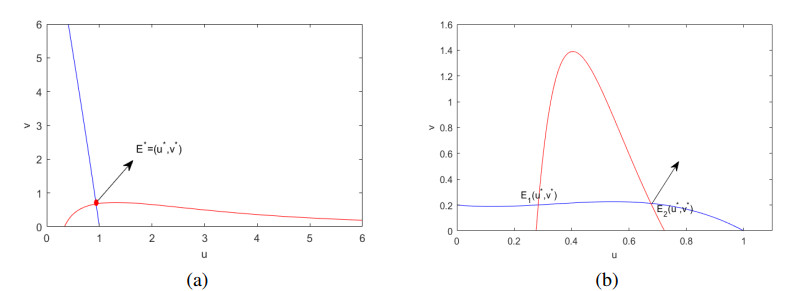









 DownLoad:
DownLoad:








